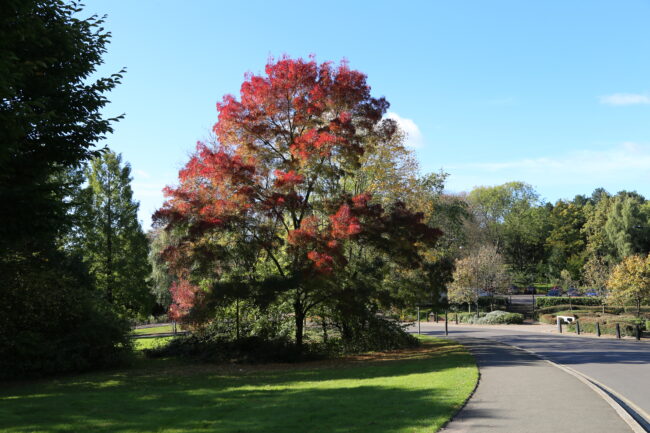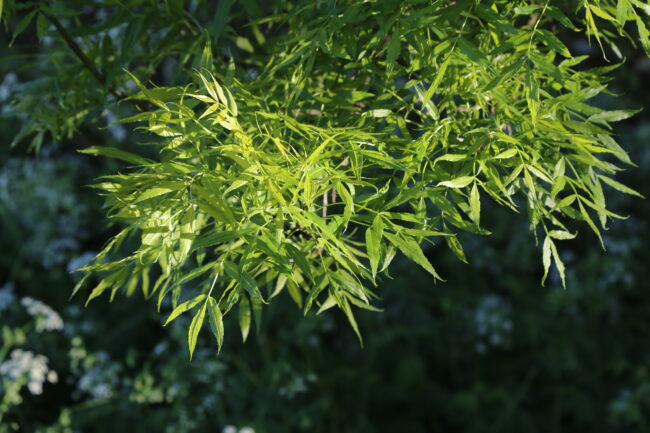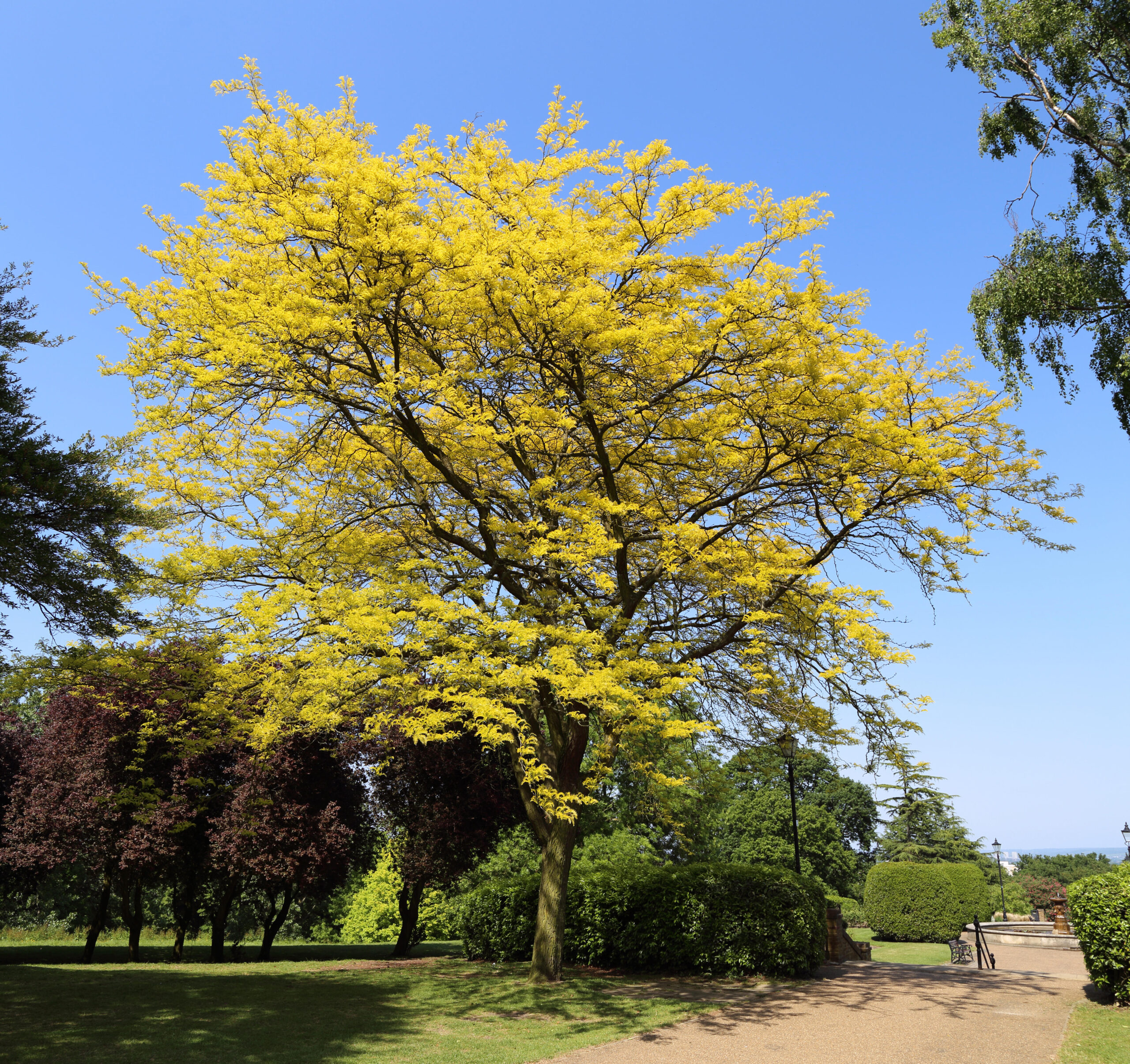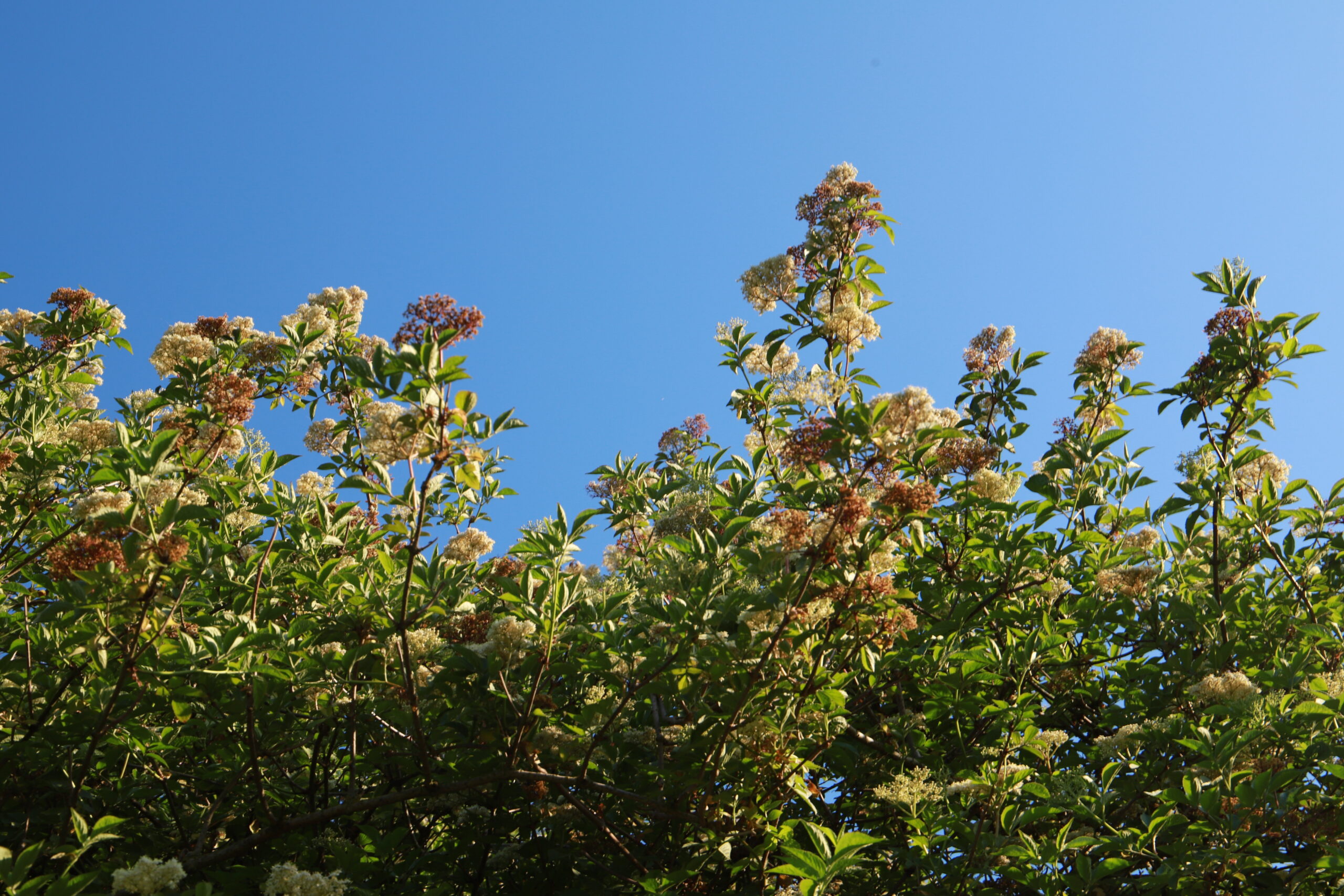Stephen Middleton from the Friends of Alexandra Park is introducing us to his favourite trees from the 7,500+ that make their home here in Alexandra Park. Here’s his pick this month…
Dramatic reds and purples give this tree its wow factor at this time of year. The Claret or Raywood Ash (Fraxinus angustifolia ssp. oxycarpa ‘Raywood’) is our October tree of the month.
The claret ash can be found just down from the Palm Court on the left hand side of Alexandra Palace Way as you go towards the Capital Garden Centre. Sun spills off the leaves showing off its vibrant colours contrasting with the nearby green ash (bright yellow at this time of year).

The story of the name. The species of this tree is narrow-leaved ash and this tree is from the subspecies of this tree called the Caucasian ash. In South Australia, back in the 1920s, a particular tree with a stunning autumn colour was found growing in a nursery and that was this tree, the claret ash, also named Raywood ash after Raywood Gardens in the Adelaide Hills.
Our tree of the month is in fact a male tree so you won’t find any ash keys which are the ash fruit. The Raywood ash is a clone and to get more trees they have to be grafted onto a rootstock.
Each leaf is divided into seven leaflets that are smaller than our native ash and give the tree a light, feathery feel.
These trees can grow to a maximum height of about 15m and so never make a huge tree.
This ash tree used to be widely planted for its brilliant autumn colour although nowadays it is much less commonly used due to worry about ash dieback disease and this tree’s occasional tendency to drop large limbs without warning.

So why are trees so colourful at this time of year? The dominant colouration of the leaves of most trees is green which is caused by the chlorophyll in the leaves. As the trees prepare to lose their leaves for the winter the tree stops producing chlorophyll and the remaining pigment degrades into colourless chemicals. The colours that are then revealed are those caused by other pigments. Carotenoids provide an orange or yellow colour. Flavanols provide a yellow colour. Both of these pigments are present throughout the year. However, anthocyanins are pigments that are just produced in autumn and provide the particular striking red and purple colours of the Raywood ash.
Some years are better than others for autumn colour and as a general rule, the best colours come about when the weather is cold, sunny and dry after a warm summer.
Wandering around this area you may come across a couple of other claret ashes adding further splashes of colour.





